#imperial rome
Text
“A woman’s face with nature’s own hand painted / Hast thou, the master-mistress of my passion”


Lines from the poem Sonnet 20 by William Shakespeare (1609) one of his texts most noted for the theme of sexual ambiguity, and the sculpture Sleeping Hermaphroditus, an Imperial Roman copy of a Hellenistic original by Polycles (circa. 155 BC) rediscovered during the early 1600s and subsequently accented with a marble pillow sculpted by Bernini in 1620; now housed in The Louvre, Paris.
#literature#english literature#dark academia#aesthetic#poetry#art#history#roman#imperial rome#ancient greece#hellenistic#hellenic art#greek art#roman art#hermaphrodite#lgbtq#lgbtqia#shakespeare#renaissance#italian renaissance#english renaissance#bernini#louvre#paris#sculpture#beauty#web weaving#ancient art#marble statue#gender
265 notes
·
View notes
Text


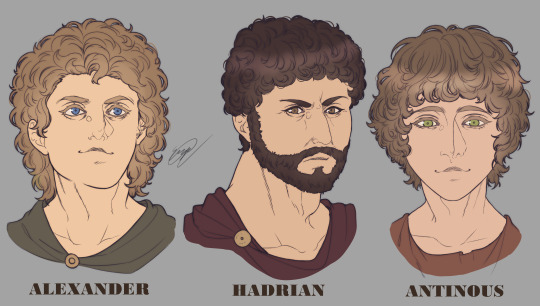
(Full view plz)
Some historical characters that will be making an appearance in the webcomic I'm developing!
#webcomic#ancient history#ramesses ii#hatshepsut#amasis#mark antony#cleopatra vii#octavian#augustus#alexander the great#hadrian#antinous#ancient egypt#ancient rome#ancient greece#roman egypt#hellenistic egypt#imperial rome#hellenistic period#republican rome#ptolemaic egypt#shmswart#thefollowersart
85 notes
·
View notes
Photo


Plotina Hair and Veil
This hair set was inspired by the busts of Pompeia Plotina Augusta, Roman empress from 98 to 117 AD, the wife of Emperor Trajan and the adoptive mother of Hadrian. Plotina was notable for her interests in philosophy, balancing her glowing reputation as a modest, virtuous wife with her active political engagement. It is the perfect hair for a Roman matron.
Plotina Hair:
Base game compatible
24 EA hair swatches
Disallowed for random
No hat chops
Imperial Veil:
Hat category
Base game compatible
24 swatches (10 patterned, 14 solid)
Disallowed for random
Hair Tie Recolors:
Nose ring (left) category
Base game compatible
20 swatches
Disallowed for random
Meshes and textures are from Maxis.
HAIR DOWNLOAD - Dropbox (no ads)
VEIL DOWNLOAD - Dropbox (no ads)
HAIR TIE RECOLORS - Dropbox (no ads)
-
MERGED DOWNLOAD - Dropbox (no ads)
#my cc#my cas cc#s4cc#roman#imperial#imperial rome#plotina#empress#roman empire#empire#s4 hair#s4cc hair#ts4cc#ts4mm#ts4 history#rome#hair
148 notes
·
View notes
Text
On This Day In History
January 16th, 27 BCE: The Roman Empire begins.
208 notes
·
View notes
Text
Dorestad Key

Keys are a surprising artefact from the Merovingian and Carolingian dynasties. Roman keys are short and rounded and are of high quality. Merovingian keys are longer, thinner and sometimes very weirdly and irregularly shaped.
Carolingian keys become shorter again and are distinguishable by their rounded handles which usually have an openwork cross decoration in them.
Merovingian era keys were in the possession of women, who would wear them from chatelaines down their belts. Wearing keys along with jewelry signified that the woman in question was in charge of the household. She was a free woman and was head of the family house. It would also mean that when the husband left for trade/pillaging, she would be left in complete charge rather than the oldest son or the man’s father.
Keys are closely associated with locks and protecting valuable things from others. Everything a family had: a house, kettle, lands, trade goods, … were under the guard of a woman.
RMO Leiden, the Netherlands
Museum nr: WD 984
Found in Dorestad (Merovingian Era) - Utrecht, The Netherlands
#merovingian#frankish#carolingian#charlemagne#frisian#viking archaeology#field archaeology#merovingian archaeology#archaeology#field archaeologist#archaeologists#history#Roman#ancient rome#imperial Rome#early middle ages#dark ages#feminism#historic feminism#feminism history
87 notes
·
View notes
Note
hi there !! i’m currently studying ancient history at a level and i Need books on the julio-claudian dynasty because it’s slowly consuming my life in a way that none of my other history interests have. do you have any recommendations? thank you so much !!
Hello! I hope you like biographies!
Julius Caesar
Julius Caesar and the Roman People by Robert Morstein-Marx, 2021 - might as well be named "Everything you thought you knew about Caesar was wrong." It's a bit dense, but its discussion of analyzing sources is very useful for other Julio-Claudians as well.
A Companion to Julius Caesar, anthology, edited by Miriam Griffin, 2009.
I haven't read Caesar by Adrian Goldsworthy (2006), but a lot of people have suggested it to me.
Augustus
Augustus by Anthony Everitt, 2006
Augustus by Adrian Goldsworthy, 2014
Tiberius
Tiberius by Robin Seager, 2005
Tiberius by David Shotter, 2004
Haven't read any books about Caligula, Claudius or Nero, but the most recent biographies are:
Caligula by Aloys Winterling, 2011
Claudius by Barbara Levick, 1990
Nero: Matricide, Music and Murder in Imperial Rome by Anthony Everitt, 2022
In general, look for books that have been published more recently, and which cite their sources often. The scholarship on these dudes has changed a lot in the past 50 years, and "pop history" books are often out of date.
Not always accurate, but fun:
Suetonius' Twelve Caesars - our main classical source, full of insane anecdotes, but also like 30% bullshit.
I, Claudius by Robert Graves - historical novel for people who think Suetonius wasn't wild enough.
Augustus by John Williams - an epistolary novel about the life of Augustus. Gave me a lot of feelings.
Paging @the-little-fox-in-the-box and @theromaboo in case they have additional recommendations!
#just roman asks#book rec#julio-claudian dynasty#ancient rome#imperial rome#@everyone feel free to add more
31 notes
·
View notes
Photo

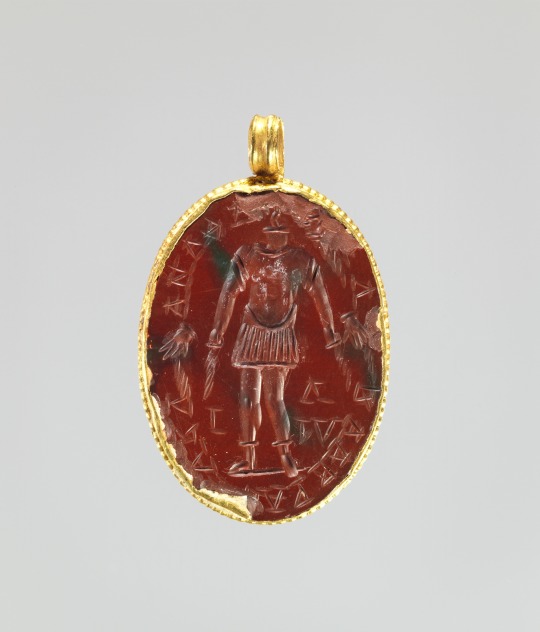
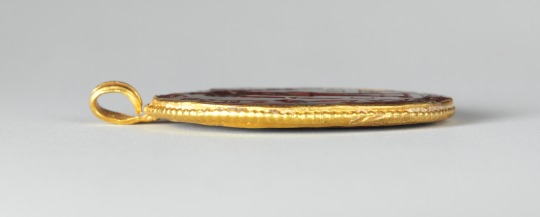
An ancient jasper intaglio magical amulet known as an Abraxas Stone featuring a cock-headed anguiped (”snake-legged god”) identified as Abrasax or Abraxas. Dated to 2nd-3rd century AD Rome, from the Metropolitan Museum of Art.
#Abraxas#Abrasax#Abraxas Stone#Rome#Imperial Rome#Ancient Rome#esotericism#paganism#pagan#Roman#Imperial Roman#Ancient Roman#ancient history#amulet#talisman#The Met#Metropolitan Museum of Art#antiquities#2nd century AD#3rd century AD#ancient#magic#magick#magical#magickal#relic#artifact
346 notes
·
View notes
Text
youtube
I, Claudius is one of the greatest shows I have ever seen on television. True it was filmed on a sound stage and it looks it today, but the writing and the acting are superb!
#i claudius#miniseries#television#1970s television#actor#actress#brian blessed#sian phillips#derek jacobi#bbc#historian#mary beard#rome#imperial rome#roman empire#Youtube
14 notes
·
View notes
Photo

Roman centurion, cornicen, and signifier direct legionaries in lorica hamata assaulting a palisade (Roger Raupp, AD&D 2e Historical Reference HR5: The Glory of Rome Campaign Sourcebook, TSR, 1993)
#D&D#Dungeons & Dragons#Roger Raupp#Roman army#ancient Rome#The Glory of Rome#siege#AD&D 2e#D&D 2e#Imperial Rome#dnd#centurion#cornicen#signifier#siege tower#Dungeons and Dragons#TSR
130 notes
·
View notes
Photo

Mosaic emblema from the “House of the Mosaic Columns” in Pompeii depicting a boxer and a rooster, 1st century, Roman
National Archaeological Museum of Naples
#ancient art#Imperial Rome#athlete#male nude#muscular physique#Italy#Napoli#decorative arts#travel photography
41 notes
·
View notes
Text
The Mystery of Laocoon and His Sons
I just find it interesting how in the 500+ years since its excavation, scholars STILL can't decide on when this thing was made. I mean that genuinely. We don't know. There's theories, but it's a whole spiderweb with contradictions, and so much has been lost to history that we just can't be sure of anything.
The first and one of the most widely accepted theories is that it can be dated to around the 1st cent. B.C.E. due to textual evidence as well as some decisively dateable statue groups found in Sperlonga in the late 1950s in Tiberius's Grotto (~125ish B.C.E.), but this is debatable for a variety of reasons as well.
Pliny the Elder, in his text from Natural History, XXXVI, 37 describes a statue group VERY similar to this one that was immediately thought of upon excavation (so quickly, in fact, that it's been brought under suspicion, more on that later). The text reads:
“This is the case with the Laocoön in the palace of the emperor Titus, a work superior to any painting and any bronze. Laocoön, his children and the wonderful clasping coils of the snakes were carved from a single block in accordance with an agreed plan by those eminent craftsmen Hagesander, Polydorus and Athenodorus, all of Rhodes.”
It is important to note that the Sperlonga Groups (fig.2) are associated with the Laocoon Group because they are inscribed with the names of the sculptors that are listed here in Pliny (i.e. Hagesander, Polydorus and Athenodorus).
However, this text is drawn into question for several reasons:
The statue group was not found in the palace of Titus, it was found in a room (not buried like the vast majority of statues thought to be this old), in a vineyard. Yeah, statues can be moved, but you'd think that if one were to move such a big piece into this literal room, it wouldn't have been kept so quiet? smuggling? sure? maybe? but then buyers aren't just gonna keep this thing hidden, would they? idk
The Laocoon Group found in 1503 that is on display in the Vatican Museum today is crafted of 7 pieces (at least) and the one Pliny describes is carved in the round. It can be said that Pliny may not have gotten a close enough look and only thought that it was in the round, but the construction of 7 pieces and the detail that can be involved comparatively, eh, again, idk...
The marbles and carving/detailing styles of the Laocoon statue group and the ones found in Sperlonga are also different. The Laocoon Group is Parian marble (paria lithos) and the one's found in Sperlonga were a Rhodian variety that was also used in the Pergamon reliefs (2nd/3rd cent. B.C.E. [another theorized dating for the Laocoon group]) known as lithos larticos.
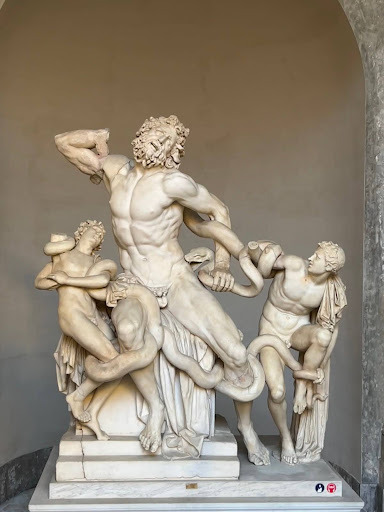
(fig.1) Laocoon and His Sons as seen in modern day at the Vatican Museum in Vatican City, Rome, Italy. Photo is property of the author, taken 12 Jan 2024.

(fig. 2) Reconstruction of the Tiberian Cave in Sperlonga: A) Group of Ulysses dragging the body of Achilles, B) Sculptural group of Scylla, C) Sculptural group of the blinding of Polyphemus, D) Sculptural group of the kidnapping of Palladium, E) Ganymede kidnapped by Zeus' eagle.
This is just a bite-size version of my larger research that I found interesting, I will definitely continue adding to it in a type of series because there are so many theories (including that it may be a Michelangelo forgery), and I want to go into mythological significance as well as reconstruction efforts.
#Laocoon#Laocoon statue group#myth#classic#classical literature#classical mythology#classics#ancient greece#imperial rome#Michelangelo#the trojan war#the trojan horse#Laocoon and His Sons#Hellenistic#Art#Sculpture#ancient history#art history#hyperfixation#rabbit hole researcher#ancient art#ancient#ancient civilizations#study notes#study motivation#rabbit hole research#college#college life
6 notes
·
View notes
Photo
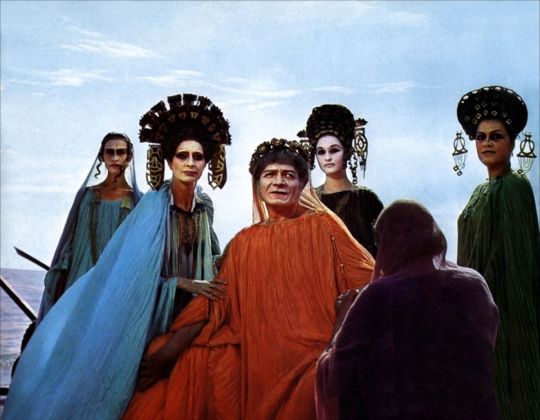
Fellini Satyricon (1969)
by Federico Fellini
52 notes
·
View notes
Text
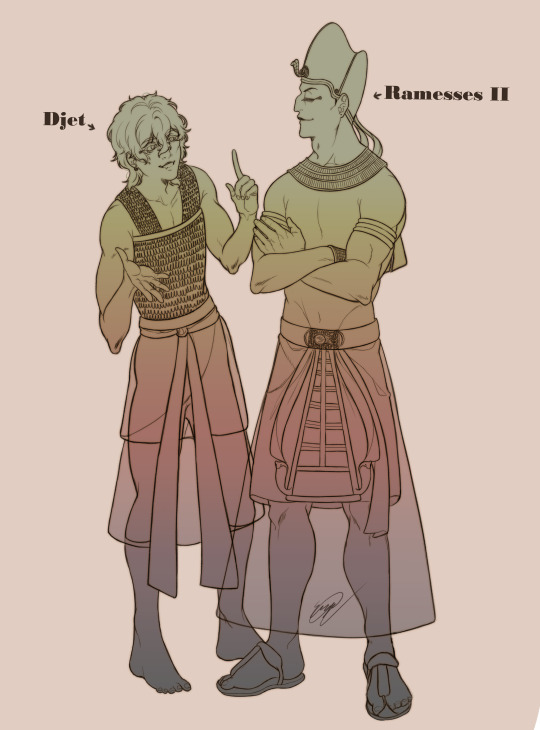









My webcomic characters ft. the historical characters they were close to!
#webcomic#ancient history#ancient egypt#amasis#ramesses ii#ptolemaic egypt#ancient rome#republican rome#cleopatra#mark antony#pharaonic egypt#ptolemy philadelphus#imperial rome#cleopatra selene ii#alexander helios#cleopatra vii#ptolemy xv#caesarion#the gracchi#tiberius sempronius gracchus#gaius sempronius gracchus#cornelia#hadrian#antinous#djet#khawy#iaret/chloe#sempronia#lucius#the followers of the divine snake
30 notes
·
View notes
Text
god what I wouldn't do for agrippina the younger's memoirs.
#Roman history#imperial rome#Agrippina the younger#Classics#uni tag#<-because im working on a paper about messalina right now and thats what made me think of this#College tag#also i may or may not have first become interested in messalina because her name sounds like messaline and im first and foremost shakesquee#Im interested in her for more reasonable reasons now but cant lie about what drew me to her
2 notes
·
View notes
Text
On This Day In History
June 9th
53: Roman emperor Nero gets married to Claudia Octavia
68: Roman emperor Nero quotes Vergil's Aeneid and kills himself.
50 notes
·
View notes
Text

5 notes
·
View notes